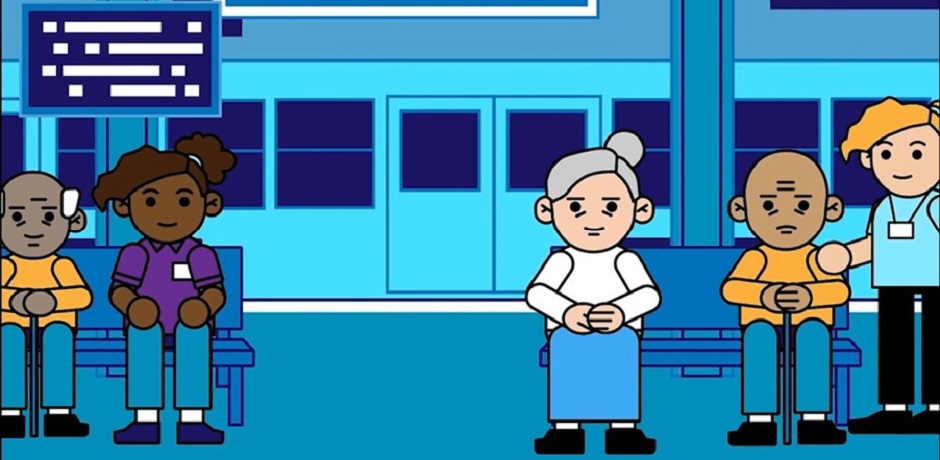)
Implementing and evaluating national guidance in adult social care: challenges and opportunities
Annette Bauer, London School of Economics & Political Science
Working with case examples of local authorities and NHS Trusts in England and Wales, the Valuing Care Guidance (VCG) study is gathering evidence about the processes, resource requirements, costs and benefits of implementing guidance in adult social care. In this blog, the researchers (Annette Bauer (lead investigator), Annette Boaz, Ties Hoomans, Sarah Jasim, Martin Knapp, Juliette Malley, Wagner Silva-Ribeiro) share their thoughts on the challenges of doing this work, highlight implications and suggest ways forward.
The value of guidance
Our understanding of how to achieve good quality in social care accessible to everyone is still limited. Incorporating evidence-based practice by implementing guidance is one way to achieve this goal. In England, guidance is available from the National Institute for Health and Care Excellence (NICE) setting out how social care should be provided to achieve better outcomes for users of social care and their carers. Guideline topics can refer to services (e.g. home care), populations (e.g. older people with learning disabilities), the organisation of services (e.g. transition between hospital and community or care home) or principles of care. How best to implement and evaluate the implementation of guidance is, however, a major challenge.
Why is the implementation of guidance not given much priority?
Implementation of evidence-based practice takes place in a chronically underfunded system, in which the frontline workforce is often poorly paid and has limited access to adequate education, training and development opportunities. This limits their capacities to engage with and develop the required skills to learn about and adopt guidance. Other organisational factors, such as hierarchical structures, can also hinder the frontline workforce from taking on this kind of work proactively. Plus, guidance is often not easy to access.
Implementing guidance is not linked to performance monitoring in most areas of social care. Therefore, senior managers in local authorities have been likely to consider investing in the implementation of guidance as an add-on rather than something that can help them to achieve their organisational goals. This might now be changing: NICE and the Care Quality Commission (CQC) the regulatory agency for health and social care, have recently linked up more formally, and CQC has added references to NICE guidance into their assessment framework. Currently though, there are no or not enough dedicated roles and resources to implement changes efficiently and effectively.
How can we assign a value to the implementation of guidance?
Currently, many local authorities and social care providers are not drawing on knowledge and resources from implementation research. Although NICE provides resources and support about implementing guidance, current awareness of these resources are low. Implementation scientists offer potentially useful evaluation methods and frameworks, but these assume a context in which processes can be strategically planned and well-resourced, which is not a given in social care. Despite progress, there are still many knowledge gaps in the research community about how implementation theories and methods apply in the context of social care.
Defining what need to be implemented and by whom is not straightforward because each NICE guideline includes a comprehensive set of recommendations. These are often closely interlinked, requiring changes from multiple individuals, organisations and even sectors including individual social care or health practitioners, provider organisations, commissioners and other agencies (e.g., housing, police or fire services).
Guidance implementation might require many preparatory and ongoing activities to build capacity for change which are difficult to measure but can become sizeable ‘hidden costs’.
Furthermore, implementing guidance might require a redefinition of success by those involved (and also potentially a redefinition of affordability and value for money). For example, a local authority might regard good relationships with service user and carers, providers and the regulatory agency, and a good reputation for delivering high quality care, as essential goals for long-term sustainability, rather than improvements in quality of life or wellbeing of service user and carers, which are also more difficult to evidence.
Even if knowledge about costs and consequences can be established in one setting or locality, the transferability of this knowledge is particularly low because of the considerable geographical variation in social care.
Four ways to address the challenge of implementation
- Improving and raising the profile of implementation practice and research. Those implementing guidance or supporting and researching the implementation of guidance, including within NICE, should not only promote messages about the importance of NICE guidance but also the importance of required resources to do the work successfully, and to assess and share their success.
- Raising the visibility of implementation support by NICE. NICE’s implementation resources provide an important starting point for planning processes that are likely to be more successful. NICE, CQC and other government departments with responsibilities for social care all have responsibilities to promote their use (whilst also appreciating that more research on the development of their methods is needed for social care).
- Using appropriate evaluation methods. In line with the latest MRC guide for complex interventions, evaluations need to be participatory, informed by theory, and employ a mix of quantitative and qualitative approaches. Steps include:
- Co-developing a theory, model or framework with those implementing guidance, which can guide both implementation and evaluation, thus increasing chances for success;
- Gathering information on contextual factors that influence costs and benefits, as well as key mechanisms for achieving them, thereby increasing the generalisability of findings on costs and benefits to other settings.
- Incorporating time tracking systems into workflow systems or – if this is not feasible – developing flexible approaches to capture timelines of activities, so that implementation processes can be costed efficiently.
- Working collaboratively. To generate and increase the uptake of relevant knowledge that can inform the wider adoption of guidance and increase the sustainability of guidance adoption, people implementing guidance (e.g. managers or practitioners) or supporting its implementation (e.g. NICE), evaluating the processes (e.g. implementation scientists, economists), using the findings of the research (national or local government) and final beneficiaries (e.g. service users and carers) need to be interconnected.
Through these measures, we can increase the likelihood that quality and equality of access will be achieved in social care.
Read NIHR Social Care Speciality posts here →




